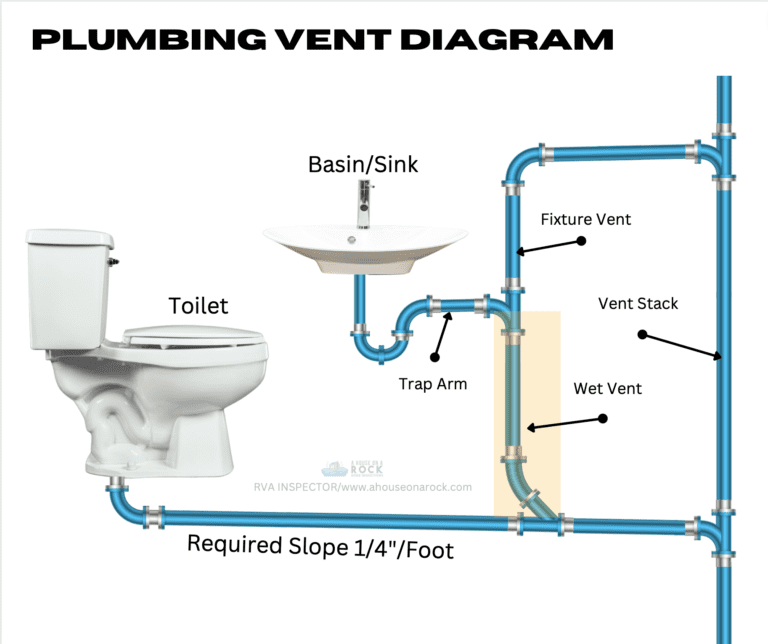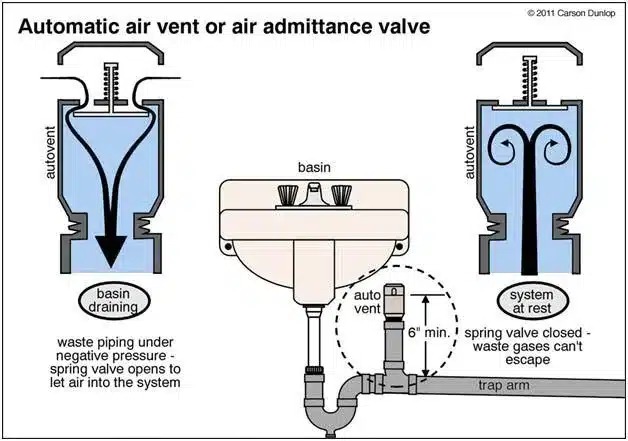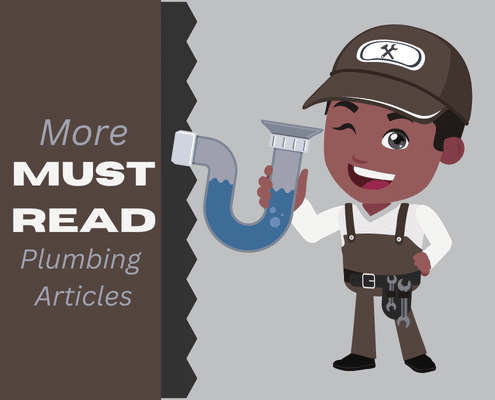4.9 1890+ Google Reviews

Have you ever looked at the roof of your home and wondered what the protruding pipes were? Those are vent pipes for your plumbing system. They are usually made of cast iron, PVC, or ABS and typically have black or aluminum flashing around them. As a homeowner, you’ll want to know what is a plumbing vent and what it’s for.
A vent pipe, also known as a stack vent or waste stack, is a vertical pipe that extends from the pipes inside your home to the outdoors. A home typically has a few plumbing vents, branch vents, and common vents that make up the venting system.
A plumbing vent has two purposes. The first purpose of a plumbing vent is to allow fresh air into the drainage system to prevent air pressure vacuums. Secondly, the venting system enables sewer gasses to escape the drainage system.

Think of what happens with a straw in a cup of liquid. When you place your finger on the top of the straw, then lift the straw, the fluid doesn’t drain out.
The water stays up because air pushes upward through the bottom opening, but no air can get in and push downward. When you release your finger, air rushes into the top of the straw.
The air pressure from the top and bottom of the straw cancel each other out, and gravity pulls the liquid down and out.
To understand your home’s plumbing system, replace the straw with a vent pipe.
Air and sewer gases push up on the water in drain pipes. Plumbing vents allow air into the drainage pipes to cancel out upward pressure. Then gravity does the rest.
A drain system is not as simple as a straw, and a full airlock is unlikely. However, a blockage in an individual vent can cause slow drains and gurgling.
The plumbing vent system also expels sewer gasses to the outdoors.
The technical term for the toxic component of sewer gas is hydrogen sulfide. Hydrogen sulfide is a naturally occurring byproduct from the bacterial breakdown of organic materials. In light concentrations, it can irritate your eyes or cause you to cough. However, in higher concentrations, it causes headaches, dizziness, or even death,
A plumbing trap seal at each plumbing fixture stops sewer gasses from moving from the drain line into the home. However, the sewer gasses still need to exit the plumbing system. Otherwise, the sewer gas pressure would build up and push through the water trap seal.
So sewer gasses move from the septic tank, or main sewer line, to the plumbing in the house, get blocked at traps, and escape through the vent lines.
Poor, missing, or blocked vents cause several plumbing issues. Vent blockage is a common plumbing problem. The vents terminate outside above the roof, so they’re prone to blockage from branches, leaves, snow, and small pests.
A blocked vent can mimic a clogged drain by causing slow drainage. If no air can make it through the top of the pipe, atmospheric pressure builds up and slows or stops drainage. In addition, a foul odor from your sink drains is a sign of a vent issue. If sewer gasses can’t escape through a vent, they build positive pressure and push through trap seals.
If you suspect you have something wrong with your vents, you should call a professional plumber.

An air admittance valve (AAV) is a one-way valve that replaces an open-air vent. Some old-school plumbers and home inspectors call them studor vents. These valves allow air into a vent but block sewer gasses from escaping.
They are used when a vertical pipe is impractical. For example, island sinks do not have a full wall behind them for a vent pipe. So, an AAV is a good solution. However, they can fail over time, creating a blocked vent.
Although plumbing codes allow AAVs, the home’s plumbing system must have at least one open air vent.
Wet venting is using the drain of one fixture as the vent of another.
The idea is that a properly installed and sized wet vent has enough air space to accommodate venting. A common example is a toilet bowl vented through a sink drain.
In a vertical drain pipe, the water flow stays on the pipe walls. This leaves the center of an active drain pipe free for venting. On the other hand, in a horizontal pipe, the water level should never rise to more than half the pipe. This leaves the top half of an active drain pipe free for venting.
Chapter 31 of the International Residential Code regulates plumbing vents for most of the country. There are several notable codes.
According to P3101.3, every trap and trapped fixture shall be vented. Remember that raps prevent sewer gasses from getting into the home.
The plumbing vent system shall not be used for purposes other than venting the plumbing system. For example, an HVAC contractor is not allowed to drain an air conditioning condensate drain into a plumbing vent.
Although nothing prohibits a wet vent, loop vent, or air admittance valve, at least one vent pipe that extends to the outdoors is required. In addition, it needs to extend at least 6″ above the roof or anticipated snow height.
Roof vents must extend at least 6″ above the roof or anticipated snow height. In addition, they can’t be less than four feet directly beneath or ten feet horizontally from any door, window, or other opening.
Vent piping is a crucial component of your indoor plumbing. A properly installed and sized vent pipe system promotes drainage and prevents harmful sewer gasses from entering your home.

What is the Purpose of a P-Trap?
Should You Replace Cast Iron Pipes?